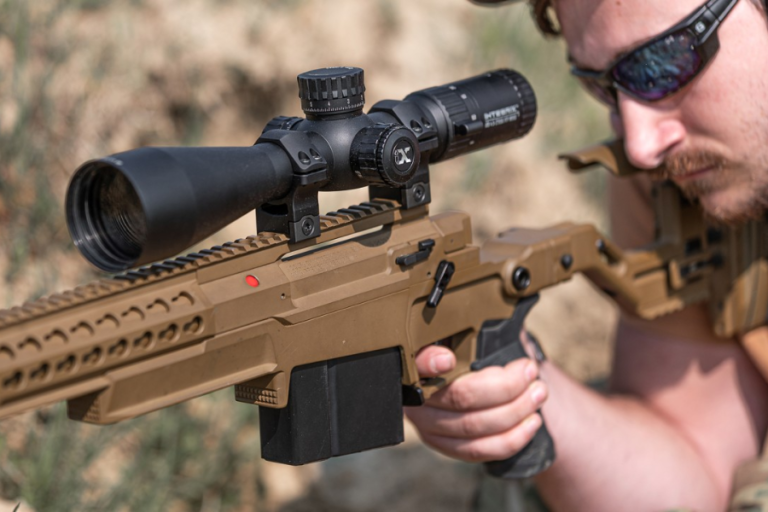Mastering The Grunts NYT Crossword Clue: Expert Tips And Strategies
The Grunts NYT Crossword has become a popular choice among avid crossword enthusiasts, providing not only an engaging way to pass the time but also offering a mental challenge that tests both knowledge and creativity. Celebrated for its clever and often intricate wordplay, The New York Times crossword puzzles have earned a well-deserved reputation as the ultimate standard for those seeking intellectual stimulation and entertainment. The carefully crafted clues, which require solvers to think beyond literal definitions, add a unique level of difficulty and enjoyment to the experience.
One of the more commonly encountered yet deceptively tricky clues is the reference to the “Sound of an Angry Grunt,” a phrase that can easily bewilder even experienced puzzle solvers. Initially, such clues might seem straightforward, but they often carry layers of meaning that require a nuanced approach. By honing specific strategies to decode these types of clues, crossword enthusiasts can significantly enhance their problem-solving skills, allowing them to tackle even the most complex puzzles with confidence and precision. Through persistent practice and the application of targeted techniques, solvers can gradually master the art of crosswords, turning even the most frustrating clues into rewarding challenges.
Decoding the “Grunts NYT Crossword” Clue
To effectively solve the Grunts NYT Crossword clue, it’s crucial to grasp the subtle details and layers of meaning behind it. While the term “grunt” may seem to suggest a simple, literal sound, crossword puzzles—especially those featured in The New York Times—rarely rely on such straightforward interpretations. In fact, the true challenge often lies in thinking beyond the obvious. In this case, the clue is less about the physical sound of a grunt and more about capturing the essence of frustration or irritation that the sound implies. For example, words like “GRR,” “SNARL,” or even “UGH” frequently serve as appropriate solutions, each representing different shades of annoyance or anger. These seemingly simple answers, however, require solvers to think creatively and flexibly, as the clues often play on both literal and figurative meanings.
The art of crossword-solving—particularly in puzzles as well-regarded as The New York Times—demands a willingness to engage with the puzzle’s intricacies. It’s not enough to take the clues at face value; one must also be attuned to potential wordplay, double meanings, or hidden nuances. Crossword constructors often weave in subtle twists, where words carry alternate interpretations or references. This type of layered clue can make the solution appear elusive at first glance. However, by staying open to different interpretations and considering the context within the puzzle, solvers can often arrive at the correct answer more swiftly and with a greater sense of satisfaction. Developing this skill is essential for consistently solving puzzles with greater accuracy and efficiency.
Moreover, successful solvers approach these puzzles with a mix of creativity and analytical thinking. By recognizing patterns and keeping an open mind about how clues are worded, you can start to anticipate some of the common tricks and techniques used in constructing these clues. This combination of attention to detail, creative flexibility, and a deeper understanding of crossword structure will ultimately enhance your ability to tackle even the most challenging crossword puzzles with confidence.
Common Answers for the “Grunts NYT Crossword”
Over time, seasoned crossword solvers have become adept at recognizing recurring answers to the Grunts NYT Crossword clue. By identifying patterns and familiarizing themselves with commonly used words, they can solve these clues more efficiently. The “Sound of an Angry Grunt” clue, in particular, has several popular answers that often fit the crossword grid. Knowing these solutions can give solvers a significant edge in cracking not only this clue but also similar ones in future puzzles.
One of the most frequently encountered answers is GRR, a short, snappy word that encapsulates the idea of frustration in just three letters. Its succinctness makes it a go-to choice for clues involving expressions of anger or irritation. The sound of “GRR” conveys an immediate, primal response to annoyance, which is why it appears often in crossword puzzles.
Another word that commonly fits this type of clue is SNARL. This word carries a more intense connotation, suggesting not just frustration, but a deeper, more aggressive form of anger. When crossword solvers see the phrase “Sound of an Angry Grunt,” SNARL is a logical solution to consider, as it evokes a fiercer and more animalistic reaction compared to “GRR.”
Then there’s UGH, a highly versatile word used to express everything from mild annoyance to outright disgust. In crosswords, “UGH” is a frequent answer for clues that imply exasperation, irritation, or a resigned grunt. Its simplicity makes it an ideal solution, especially when space in the crossword grid is limited to three letters.
While less commonly used, the word RUMBLE can also be an appropriate fit. “RUMBLE” suggests a deeper, more resonant sound—one that reflects a guttural grunt of frustration or anger. This word offers a different interpretation of an angry sound, adding variety to the list of potential answers.
By familiarizing yourself with these frequently occurring solutions, you can significantly increase your chances of solving not only the Grunts NYT Crossword clue but also similar clues that you may encounter in other puzzles. However, it’s essential to also take into account the number of letters required by the crossword grid. Matching the answer’s length with the available space is a crucial step in narrowing down your options and arriving at the correct solution faster.
Recognizing these patterns and paying attention to the nuances of each clue will help you become a more skilled crossword solver, allowing you to tackle even the trickiest clues with greater confidence and precision.
Effective Strategies for Solving the “Grunts NYT Crossword” Clue

When approaching the Grunts NYT Crossword or any challenging crossword puzzle, having the right mindset and applying effective strategies can make a significant difference in your success rate. Whether you’re a seasoned puzzle enthusiast or just starting out, developing a tactical approach will not only make the process more enjoyable but also enhance your overall solving skills. Below are some expert tips to help you decode even the trickiest clues, including those related to the “Sound of an Angry Grunt.”
1. Think Beyond Literal Meanings
One of the most common pitfalls in solving crossword puzzles is getting stuck on the literal meaning of a word. In the case of the Grunts NYT Crossword clue, the word “grunt” might initially lead you to think of an actual noise. However, crossword puzzles—especially those featured in The New York Times—often rely on more abstract interpretations. Instead of focusing solely on the physical sound of a grunt, expand your thinking to include any terms that convey frustration, irritation, or anger. Answers like “GRR” or “UGH,” while not literal grunts, perfectly capture the emotional essence of the clue. The key is to think creatively and be open to a broader range of words that express displeasure or annoyance.
2. Leverage Cross-References
Crossword puzzles are a web of interconnected clues, and one of the best ways to solve a challenging clue is by looking at the letters provided by intersecting answers. When working on a tricky clue like the Grunts NYT Crossword, take a moment to assess the cross-references. Solving surrounding clues can often give you crucial letters that narrow down the possibilities for the difficult clue you’re stuck on. If you’re unsure of the answer to the “Sound of an Angry Grunt” clue, the letters from other parts of the puzzle might guide you toward the correct word. This strategy is especially useful when multiple answers intersect, as it allows you to double-check potential solutions based on the existing letters.
3. Stay Flexible in Your Approach
One of the most important skills in solving crossword puzzles is the ability to stay flexible and avoid getting too attached to a single answer. Crossword puzzles are designed to challenge your assumptions, and it’s easy to fall into the trap of thinking you’ve got the right solution, only to realize it doesn’t fit the puzzle’s overall structure. If your initial guess for the Grunts NYT Crossword clue doesn’t align with the number of available spaces or doesn’t work with intersecting answers, be willing to reconsider your approach. Flexibility is key to solving puzzles, as the right answer may only become clear after ruling out a few incorrect guesses. Being open to alternative answers can help you avoid frustration and keep the puzzle-solving process enjoyable.
4. Dissect the Clue for Hidden Meanings
Crossword clues often include subtle wordplay or hidden meanings that aren’t immediately obvious. If the Grunts NYT Crossword clue seems to be more complex than it first appears, take a moment to break it down into smaller components. Is there a pun or a play on words? Could the clue be referencing something more figurative rather than literal? Dissecting the clue can reveal alternate interpretations that you might not have considered at first glance. By carefully analyzing the structure and wording of the clue, you can uncover hidden meanings that lead you to the correct answer. This method is especially helpful for puzzles that involve tricky or multi-layered clues, as it allows you to peel back the layers of meaning one at a time.
5. Take Breaks for Fresh Perspective
Crossword puzzles require mental stamina, and sometimes the best thing you can do when you’re stuck is to take a break. Stepping away from the puzzle for a few minutes, or even longer, can help you return with a fresh perspective and new insights. When working on difficult clues like the Grunts NYT Crossword one, it’s easy to become frustrated or fixated on a wrong answer. Taking a short break can reset your thinking, allowing you to approach the puzzle with renewed focus and clarity. Many expert solvers recommend this tactic, as it often leads to breakthroughs that wouldn’t occur if you tried to push through while mentally fatigued. Remember, crossword-solving is a form of mental exercise, and just like any workout, your brain benefits from rest and recovery.
Avoiding Common Pitfalls

Even the most seasoned crossword solvers can occasionally fall victim to common errors when working on challenging clues like the Grunts NYT Crossword. Recognizing and avoiding these pitfalls can significantly enhance your solving efficiency and accuracy. Here are several key mistakes to watch out for and strategies to help you navigate them:
1. Jumping to Conclusions
One of the most frequent missteps in crossword solving is rushing to fill in an answer without thoroughly evaluating all possibilities. It’s tempting to write down the first answer that seems to fit, especially under time pressure, but this approach can lead to errors. The initial guess might not always be correct and can sometimes mislead you further down the wrong path. Instead, take the time to carefully consider various potential answers and ensure they fit both the clue and the overall crossword grid. Double-checking your answers against the clues and the surrounding words will help prevent mistakes and ensure that your solution is accurate.
2. Overlooking Cross-Referencing Clues
Crossword puzzles are intricately designed with intersecting clues that can offer valuable hints and confirmations. When working on a clue like the Grunts NYT Crossword, don’t ignore the answers to intersecting clues. The letters you uncover from solving other parts of the puzzle can provide crucial insights into the solution of a challenging clue. Often, the letters from adjacent answers can help narrow down your choices and confirm whether your initial guesses are on the right track. By leveraging these cross-references, you can gain additional clues that may lead you to the correct answer more efficiently.
3. Neglecting the Length of the Answer
Another common error is neglecting to consider the length of the answer in relation to the available squares in the crossword grid. Each clue must fit a specific number of spaces, and failing to account for this can lead to incorrect solutions. Ensure that any potential answer fits within the allotted space on the grid and aligns with the puzzle’s formatting requirements. The length of the answer often serves as a crucial hint in determining the correct word, so take this into account when evaluating possible solutions.
By being mindful of these common pitfalls and applying the strategies to avoid them, you can improve your crossword-solving skills and tackle puzzles with greater confidence. Attention to detail, careful consideration of intersecting clues, and alignment with the grid’s structure will help you solve puzzles more efficiently and with fewer errors. This approach will not only enhance your performance on the Grunts NYT Crossword but also make the overall crossword-solving experience more rewarding.
Additional Tips for Enhancing Your Crossword Skills

Broader Strategies to Enhance Your Crossword-Solving Skills
While mastering specific clues like the Grunts NYT Crossword is an important milestone, broadening your approach with effective strategies can greatly enhance your overall crossword-solving abilities. Implementing these strategies will not only improve your performance on individual clues but also make the entire puzzle-solving process more enjoyable and efficient.
1. Practice Regularly
Just as with any other skill, consistent practice is key to improvement. Engaging with crossword puzzles on a regular basis helps you become more acquainted with common patterns, recurring clues, and frequently used answers. This ongoing practice will naturally increase your familiarity with different types of clues and answer formats. Over time, you’ll develop a quicker recognition of common answers and a greater confidence in your solving abilities. The more puzzles you tackle, the more adept you’ll become at deciphering even the most challenging clues, making your overall crossword experience more rewarding.
2. Broaden Your Knowledge Base
Crossword puzzles often draw from a diverse range of subjects, including historical events, pop culture references, literature, and beyond. To excel in solving crosswords, it’s beneficial to expand your general knowledge across various fields. Reading books, staying updated on current events, and exploring different topics will provide you with a broader pool of information to draw from. This expanded knowledge base will equip you with a wider array of potential answers and improve your ability to solve clues that require specific or less common knowledge.
3. Utilize Tools Effectively
While it’s important to challenge yourself, using tools like crossword dictionaries, reference books, or puzzle-solving apps can be a valuable part of your strategy. These resources can offer hints or definitions without providing direct answers, helping you to work through tricky clues without giving away the solution entirely. By integrating these tools into your solving routine, you can gain additional support when needed while still engaging in the problem-solving process. However, be sure to use them judiciously to maintain the challenge and enjoyment of solving puzzles independently.
4. Solve with a Partner
Collaborating with others can bring a fresh perspective and introduce new problem-solving approaches to your crossword experience. Working with a partner allows you to share insights, discuss potential answers, and brainstorm together, which can be especially helpful for tackling complex clues. Additionally, solving puzzles with someone else adds a social element to the activity, making it more interactive and enjoyable. Whether you’re teaming up with a friend, family member, or joining a crossword-solving group, collaboration can enhance your skills and make the solving process more engaging.
By incorporating these strategies into your crossword-solving routine, you’ll be able to approach each puzzle with greater expertise and confidence. Regular practice, expanding your knowledge, utilizing helpful tools, and collaborating with others are all effective ways to enhance your overall crossword-solving skills. Embrace these methods to not only master individual clues like the Grunts NYT Crossword but also to elevate your enjoyment and proficiency across all crossword puzzles.
Conclusion
Mastering the Grunts NYT Crossword clue, and crossword puzzles in general, involves a combination of strategy, practice, and creativity. By understanding the nuances of clues, using intersecting answers, and avoiding common pitfalls, you can improve your solving efficiency and enjoyment. Regular practice and expanding your knowledge base will further enhance your skills, making even the most challenging puzzles more approachable. Utilizing tools and collaborating with others can provide additional support and fresh perspectives. With these strategies in mind, you’ll find yourself solving puzzles with greater confidence and satisfaction. Embrace the challenge, and let each crossword puzzle be an opportunity to refine your problem-solving abilities and enjoy the mental exercise.





